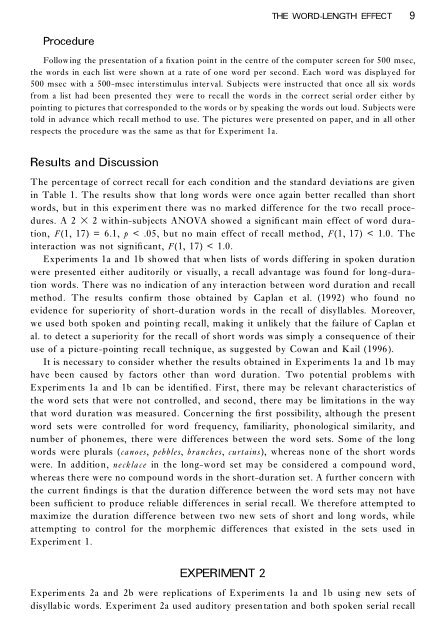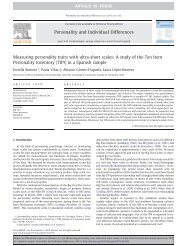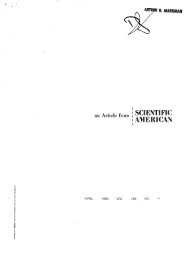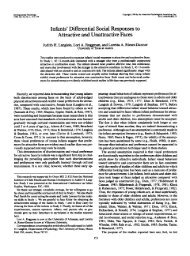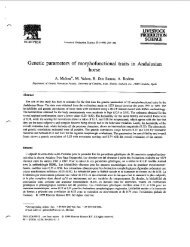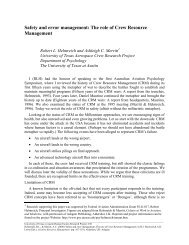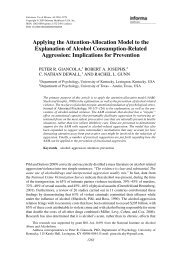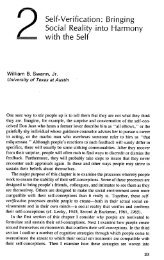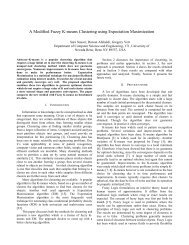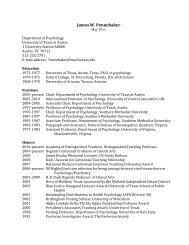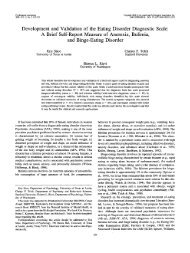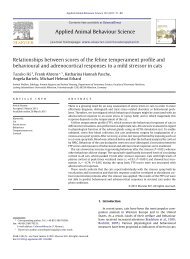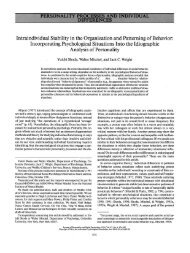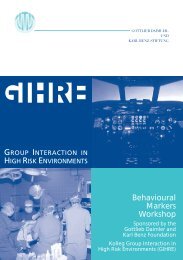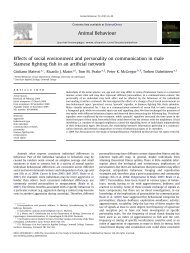The Word-Length Effect and Disyllabic Words (Lovatt
The Word-Length Effect and Disyllabic Words (Lovatt
The Word-Length Effect and Disyllabic Words (Lovatt
You also want an ePaper? Increase the reach of your titles
YUMPU automatically turns print PDFs into web optimized ePapers that Google loves.
Procedure<br />
THE WORD-LENGTH EFFECT 9<br />
Follow ing the presentation of a ®xation point in the centre of the computer screen for 500 msec,<br />
the words in each list were shown at a rate of one word per second. Each word was displayed for<br />
500 msec with a 500-msec interstimulus interval. Subjects were instructed that once all six words<br />
from a list had been presented they were to recall the words in the correct serial order either by<br />
pointing to pictures that corresponded to the words or by speaking the words out loud. Subjects were<br />
told in advance which recall method to use. <strong>The</strong> pictures were presented on paper, <strong>and</strong> in all other<br />
respects the procedure was the same as that for Experiment 1a.<br />
Results <strong>and</strong> Discussion<br />
<strong>The</strong> percentage of correct recall for each condition <strong>and</strong> the st<strong>and</strong>ard deviations are given<br />
in Table 1. <strong>The</strong> results show that long words were once again better recalled than short<br />
words, but in this experim ent there was no marked difference for the two recall procedures.<br />
A 2 3 2 within-subjects ANOVA showed a signi®cant main effect of word duration,<br />
F(1, 17) = 6.1, p < .05, but no main effect of recall method, F(1, 17) < 1.0. <strong>The</strong><br />
interaction was not signi®cant, F(1, 17) < 1.0.<br />
Experiments 1a <strong>and</strong> 1b showed that when lists of words differing in spoken duration<br />
were presented either auditorily or visually, a recall advantage was found for long-duration<br />
words. <strong>The</strong>re was no indication of any interaction between word duration <strong>and</strong> recall<br />
method. <strong>The</strong> results con®rm those obtained by Caplan et al. (1992) who found no<br />
evidence for superiority of short-duration words in the recall of disyllables. Moreover,<br />
we used both spoken <strong>and</strong> pointing recall, making it unlikely that the failure of Caplan et<br />
al. to detect a superiority for the recall of short words was simply a consequence of their<br />
use of a picture-pointing recall technique, as suggested by Cowan <strong>and</strong> Kail (1996).<br />
It is necessary to consider whether the results obtained in Experim ents 1a <strong>and</strong> 1b may<br />
have been caused by factors other than word duration. Two potential problem s with<br />
Experim ents 1a <strong>and</strong> 1b can be identi®ed. First, there may be relevant characteristics of<br />
the word sets that were not controlled, <strong>and</strong> second, there may be lim itations in the way<br />
that word duration was measured. Concerning the ®rst possibility, although the present<br />
word sets were controlled for word frequency, familiarity, phonological similarity, <strong>and</strong><br />
number of phonem es, there were differences between the word sets. Some of the long<br />
words were plurals (canoes, pebbles, branches, curtains), whereas none of the short words<br />
were. In addition, necklace in the long-word set may be considered a compound word,<br />
whereas there were no compound words in the short-duration set. A further concern with<br />
the current ®ndings is that the duration difference between the word sets may not have<br />
been suf®cient to produce reliable differences in serial recall. We therefore attempted to<br />
maximize the duration difference between two new sets of short <strong>and</strong> long words, while<br />
attempting to control for the morphemic differences that existed in the sets used in<br />
Experim ent 1.<br />
EXPERIMENT 2<br />
Experim ents 2a <strong>and</strong> 2b were replications of Experim ents 1a <strong>and</strong> 1b using new sets of<br />
disyllabic words. Experiment 2a used auditory presentation <strong>and</strong> both spoken serial recall


